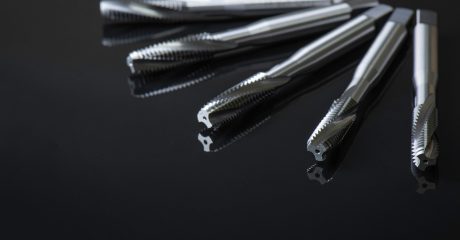There are many different types of thread taps, and knowing exactly when to use each will make your job faster and easier. Each type of thread tap has varying advantages and disadvantages; in part 2 of this guide we discuss those in detail so you can make an informed decision.
Pipe Taps
As you might expect, Pipe Taps are used for tapping pipe threads. There are 2 different types of pipe taps depending on whether the pipe thread is intended to be straight or tapered. Taps for tapered pipe threads have to work harder because they aren’t drilling a standard hole. Instead there’s quite a lot more material they must remove at the top of the hole, than bottom.
Roll Taps
Thread Forming taps don’t cut threads at all; instead they cold form. Threads made this way are often called “rolled” threads. With this process, the metal is pushed out of the way and compressed into position rather than being cut. As a result, the taps themselves are less likely to break and the threads they make are stronger.
While many believe they’re only good for soft materials like aluminum, they can actually be used on materials up to a hardness of 36 HRC, which is about 340 BHN. That covers a surprisingly wide range of materials including steel.
Extension Taps (Long Shank Taps)
These are just thread taps with a long shank to facilitate reaching difficult holes that are blocked by other features on the part.
Contact Custom Tool Today!
If you’re looking for a reliable CNC machining or tool regrinding services, contact us today. Our team of experts is ready to help you achieve the highest level of precision and accuracy in your components.
